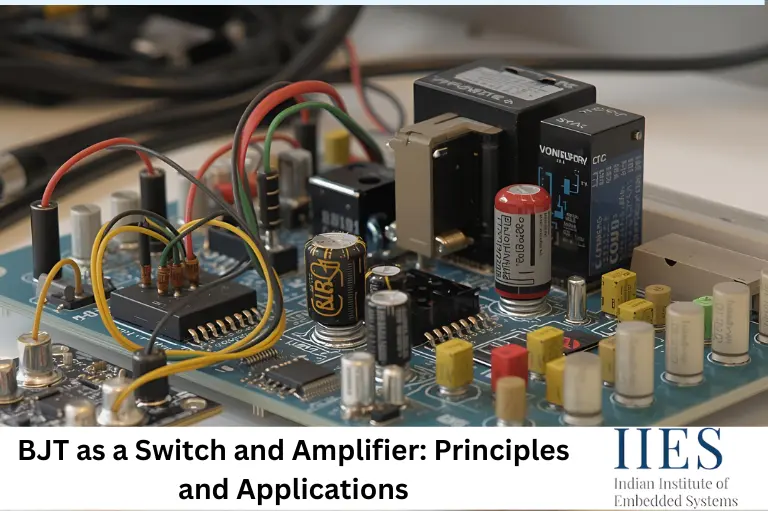
BJT Amplifier & Switch is a fundamental concept in electronics that explains how a single transistor can perform both amplification and switching operations. By controlling current flow through its terminals, a BJT can boost weak signals or act as an efficient on/off electronic switch in various circuits. Understanding this dual functionality is crucial for students, hobbyists, and engineers working with analog and digital systems.
Learning how to use a BJT as an amplifier and switch helps you grasp core electronics principles, apply essential biasing techniques, design reliable circuits, and implement practical applications across embedded systems, power electronics, and communication devices. This guide simplifies the working principles, design steps, and real-world use cases to build your confidence in transistor-based circuit design.
A Bipolar Junction Transistor (BJT) is a three-terminal device operating in two key modes:
A Bipolar Junction Transistor (BJT) is one of the most important semiconductor devices used in both analog and digital electronics. Its ability to operate as a switch and as an amplifier makes it a core building block of modern circuits.BJTs help control current, boost weak signals, and enable reliable switching in embedded systems, power control circuits, and communication electronics.
When a BJT operates as a switch, it transitions between:
This switching principle forms the basis of relay drivers, LED drivers, and digital logic control circuits.
Key switching parameters include:
Example Calculation:
When biased in the active region, a BJT acts as a highly effective amplifier used in audio, RF, and sensor circuits.
Key equations:
This configuration forms a stable common emitter BJT amplifier, providing:
| Feature | Switch Mode | Amplifier Mode |
| Operating Region | Cutoff/Saturation | Active |
| Power Use | Used only during transitions | Continuous |
| Frequency Limits | Determined by switching speed | Determined by amplifier bandwidth |
| Use Case | Digital control | Signal amplification |
Cutoff frequency: f(-3dB) = 1 / (2πRC)
Gain-bandwidth product: GBW = Gain × Bandwidth
| Feature | BJT as a Switch | BJT Amplifier |
| Region | Cutoff, Saturation | Active |
| Speed | Limited by switching delay | Frequency-dependent |
| Complexity | Simple | Requires biasing |
| Uses | Logic, power drivers | Audio, RF, instrumentation |
BJTs remain essential due to their versatility. Whether used as a BJT amplifier or as a BJT switch, they offer:
A strong understanding of BJT biasing techniques, switching behavior, and frequency response ensures stable, predictable performance in embedded systems, communication, instrumentation, and power-electronics applications.
Switch uses cutoff/saturation; amplifier uses active region.
It sets a stable base voltage using two resistors.
Capacitances, RC network, and gain stage.
Yes, with a proper base current and a flyback diode.
It provides high gain and good stability.
Indian Institute of Embedded Systems – IIES